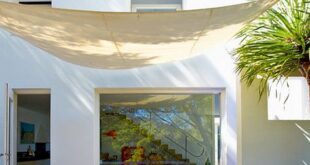Front yard landscaping plays a crucial role in enhancing the overall curb appeal of a home. When planning a front yard landscaping design layout, it is important to consider factors such as the size of the yard, the architectural style of the home, and the maintenance level desired. One popular design layout that is both aesthetically pleasing and functional is the use of a focal point, such as a tree or large shrub, in the center of the yard. This focal point can serve as a visual anchor and create a sense of balance in the landscaping design.
Incorporating a variety of plants and flowers in different colors, textures, and heights can help add interest and depth to the front yard landscaping design layout. Mixing evergreen plants with seasonal flowers can ensure that the yard looks appealing year-round. Additionally, using a mix of perennials and annuals can provide a continuous display of color and bloom throughout the seasons. Consider planting flower beds along the edges of the yard or around the focal point to create a cohesive and harmonious look.
Another important element to consider in front yard landscaping design layout is the use of hardscaping features, such as walkways, patios, and retaining walls. These features not only provide functional use but also add structure and definition to the yard. Using materials such as natural stone, brick, or pavers can help create a cohesive look that complements the overall design of the home. Incorporating seating areas or outdoor lighting can also enhance the functionality and visual appeal of the front yard.
When designing the layout of the front yard landscaping, it is important to pay attention to the scale and proportion of the various elements. For example, planting tall trees or shrubs too close to the house can overwhelm the space and make the yard feel cramped. By carefully considering the size and spacing of plants and hardscaping features, you can create a balanced and visually appealing front yard design layout. Pay attention to how the landscaping design interacts with the architecture of the home and the surrounding environment to ensure a cohesive and harmonious look.
Finally, consider incorporating sustainable and low-maintenance landscaping elements into the front yard design layout. Choosing native plants that are adapted to the local climate and soil conditions can help reduce the need for excessive watering and fertilizing. Installing a drip irrigation system or using mulch can help conserve water and reduce maintenance requirements. By incorporating these sustainable practices into the front yard landscaping design layout, you can create a beautiful and functional outdoor space that is both environmentally friendly and easy to maintain.
















